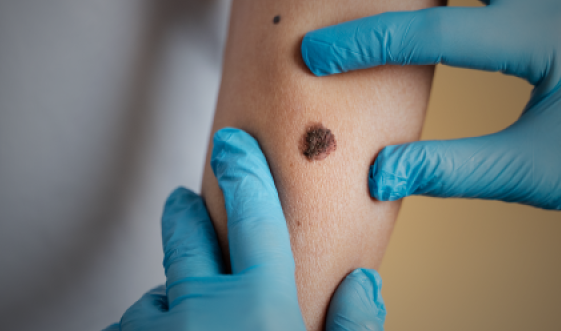Melanoma has seen an extraordinary therapeutic revolution over the past decade, with immune checkpoint inhibitors (e.g. nivolumab, pembrolizumab, ipilimumab) and BRAF/MEK inhibitors (e.g. dabrafenib/trametinib, vemurafenib/cobimetinib) substantially improving survival. However, the challenge for health technology assessment (HTA) agencies is not only determining if these therapies work, but how well they perform across diverse, real-world populations. This is where real-world evidence (RWE) steps in—filling crucial gaps left by randomised controlled trials (RCTs).
RCTs are the gold standard for efficacy assessment but often exclude elderly patients, those with comorbidities or poor ECOG performance status. Consequently, RCTs may over-estimate benefit or underestimate toxicity when applied in clinical practice (Makady et al., 2017; Thokagevistk et al., 2024).
Real World Evidence allows HTA agencies to:
- Validate long-term survival extrapolations beyond trial follow-up periods.
- Estimate effectiveness in real-world populations (e.g. ECOG 2–3, CNS metastases).
- Analyse treatment adherence, dose modifications and discontinuations.
- Quantify healthcare resource use, hospitalisation rates and safety in routine care.
In melanoma, where treatment durations and immune-related adverse events vary widely, this information is often unavailable in pivotal trials.
United Kingdom (NICE)
NICE accepted RWE in 11 of 14 melanoma therapy submissions between 2011–2019 (Llewellyn, 2020), including TA366 (ipilimumab–nivolumab combo) and TA558 (pembrolizumab). In the latter, registry-derived data were crucial in extrapolating the survival plateau seen in immunotherapy responders. NICE now has formal guidance for integrating RWE, encouraging structured observational studies and use of external comparators, particularly for oncology or rare diseases (NICE, 2022).
🇫🇷 France (HAS)
HAS has published specific methodological guidance for RWE studies (HAS, 2021), with templates to standardise study protocols. However, acceptance remains cautious: only 22% of melanoma appraisals between 2011–2019 incorporated RWE (Llewellyn, 2020), and studies must demonstrate robust methodology (minimal bias, local data). Example: In the CT14929 appraisal of vemurafenib + cobimetinib, retrospective French registry data helped inform real-world treatment duration and adverse event rates.
Germany (IQWiG/G-BA)
IQWiG recognises RWE in exceptional cases—particularly when “dramatic effects” are observed (e.g. RR >10, p<0.01) (Sammon et al., 2020). However, HTA agencies prefer robust internal validity and often discount non-randomised studies unless clearly justified.
IQWiG’s 2020 guidance emphasises the role of routine data sources, though with limited formal structure for submission.
🇨🇦 Canada (CADTH)
CADTH accepted RWE in 58% of melanoma appraisals. Retrospective chart reviews and cohort studies have been useful in defining local practice patterns, such as sequencing of immunotherapy vs. targeted therapy. Draft guidance on RWE was released in 2022 (CADTH, 2022) encouraging submission of local registry or claims data.
A major criticism of RWE is its vulnerability to unmeasured confounding variables not captured in real-world datasets that influence both treatment allocation and outcomes. This concern has limited the credibility of RWE in HTA unless sophisticated adjustment is undertaken.
Sammon et al. (2020) highlight that quantitative bias analysis—using tools such as E-values, bias-adjusted estimates and Bayesian sensitivity modelling—is under-utilised in HTA submissions, despite being well-established in pharmacoepidemiology.
Example: In a study comparing alectinib vs. ceritinib in ALK+ NSCLC, an adjusted hazard ratio of 0.65 was recalculated to an adjusted risk ratio (ARR) of 0.74. The E-value for this effect was 2.03, meaning any unmeasured confounder would need to double the risk of both treatment allocation and mortality to nullify the finding—a high bar, supporting the result’s credibility.
HTA agencies could, and arguably should, demand these kinds of quantitative bias analyses in submissions involving RWE.
The most effective use of RWE is not just in initial appraisals—but across the lifecycle of a technology (Oortwijn, 2019; Thokagevistk, 2024):
- Early access programmes: RWE supports continuation or de-risking of temporary access (e.g. UK Cancer Drugs Fund).
- Reassessments: As with nivolumab-ipilimumab combinations, where 5+ year survival data may outdate the original HTA.
- Health system readiness: Evaluating operational cost, patient adherence, diagnostic rates and system capacity (e.g. biomarker testing).
From the Roche/IQVIA 2024 global study of seven HTA systems, the following consensus recommendations emerged:
- Co-develop protocol templates with agencies for RWE studies, especially external control arms.
- Use local registries and claims data, even if international data is available.
- Integrate real-world utilities, adherence and healthcare use into cost-effectiveness models.
- Apply quantitative methods for sensitivity to unmeasured confounding (e.g., array approaches, E-values).
- Advocate for early scientific advice with HTA bodies to align on acceptable RWE designs.
Real-world evidence is no longer the exception—it is becoming a vital companion to trial data, especially in complex diseases like melanoma. But acceptance hinges on a transparent, scientifically credible approach. HTA agencies increasingly expect well-planned studies with minimised bias, local relevance and rigorous statistical methods to adjust for confounding and selection bias.
The question is no longer whether to include RWE in melanoma HTAs—but how to do it with scientific integrity and strategic foresight.
References:
- Llewellyn, S. (2020). Real-world evidence in HTA appraisals of melanoma therapies. [LinkedIn Post]
- Thokagevistk, K. et al. (2024). Real-World Evidence to Reinforce Clinical Trial Evidence in HTA. J. Mark. Access Health Policy. [https://doi.org/10.3390/jmahp12020009]
- Sammon, C. et al. (2020). Real-world evidence and unmeasured confounding in HTA. J. Comp. Eff. Res. [https://doi.org/10.2217/cer-2020-0112]
- Oortwijn, W. et al. (2019). HTAi Global Policy Forum – RWE in HTA: From Theory to Action.
- NICE (2022). Real-World Evidence Framework. [https://www.nice.org.uk]
- HAS (2021). Guide méthodologique pour les études en vie réelle. [https://www.has-sante.fr]
